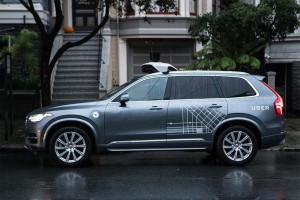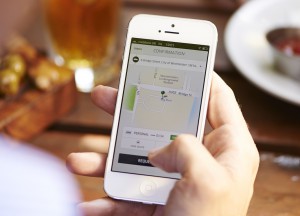Hammered for months over a variety of ethical and legal slips – as well as its poor financial numbers – ride-sharing giant Uber appears to be taking steps to soften its macho corporate image while also being more cooperative with regulators.
Forced out of San Francisco last December after refusing to get the requisite state permit for its autonomous vehicle test drive program, Uber is now ready to return to California after having filed the necessary paperwork. Meanwhile, the company now says it will stop “greyballing,” a process it developed to make it more difficult for regulators in cities ranging from Boston to Paris.
But Uber still faces a variety of other challenges. It has hired former U.S. Attorney-General Eric Holder, for one thing, to handle a probe of sexual harassment within the mostly male company. And Uber CEO has said he plans to seek “leadership help,” after being caught on a dashboard cam raging at one of the company’s drivers who had questioned corporate payment policies. Such issues have been playing into the hands of critics and competitors – including Lyft, which last week announced a new $500 million fundraising bid.
(Uber CEO Kalanick seeking “leadership help” after tantrum goes viral. Click Here for the story.)
Uber has had a long history of challenging or ignoring regulators, often battling its opponents in court. That helped, in its early days, to open up markets traditionally limiting new challengers to existing taxi and limousine services. But such an approach has been backfiring lately.
Uber has been an active proponent of autonomous vehicles, CEO Travis Kalanick predicting the company will eventually field fleets of fully driverless vehicles, bringing the cost of a ride down so low that many consumers will stop buying cars.
In December, the firm launched a test of self-driving Volvo XC90s in San Francisco, but the move quickly came under fire because Uber declined to apply for the necessary state permit. When asked why it hadn’t, Anthony Levandowski, the head of Uber’s self-driving program, told the Associated Press, “This is where science and logic needs to trump blind compliance.”
Within days, the California Department of Motor Vehicles took legal action to block the project, pulling the registrations of 16 Uber-modified Volvos. The company responded that it would simply move those autonomous vehicles to Arizona.
(Uber hires former U.S. Attorney General to investigate harassment claims. Click Here for the story.)
But, this week, Uber is getting ready to relaunch the pilot program in its home town, after applying for – and receiving – the necessary permit. The California DMV as also approved 48 “back-up drivers,” who will operate the Volvos and remain at the ready to take control in an emergency. Uber is now the 26th company to receive the state permit.
The ride-sharing service isn’t saying when it will actually begin operating again, and it initially may run the vehicles without picking up paying passengers, according to some news reports.
It continues to use autonomous vehicles in Phoenix and in Pittsburgh, the latter city home to a new self-driving technology research center Uber has set up.
Despite going through the regulatory process, however, not everyone is happy to see Uber return to San Francisco’s streets. Non-profit Consumer Watch issued a statement noting that during its brief December run, Uber’s autonomous test fleet was seen violating numerous traffic laws, including running red lights and driving into bicycle lanes.
“Now that Uber has permits to test, the company’s activities must be closely monitored by police,” Consumer Watch Director John Simpson said. “What is clear is that Uber must not use passengers as human guinea pigs as part of a publicity stunt.”
Separately, Uber now says it will take steps to end so-called “greyballing,” a practice it crafted to hold at bay undercover regulators in cities it considered unfriendly to its services. It would serve up what looked like the regulator Uber app on their smartphones, but rides would never actually be ordered. The company also used that approach with riders it had identified as being problematic – harassing drivers, for example.
The decision comes a week after the New York Times identified the practice – which was used in a number of cities, such as Boston and Paris, as well as in Australia, China, Italy and other countries that Uber found difficult to work in.
(New Uber tech chief forced out over sexual harassment claim, Click Here.)



